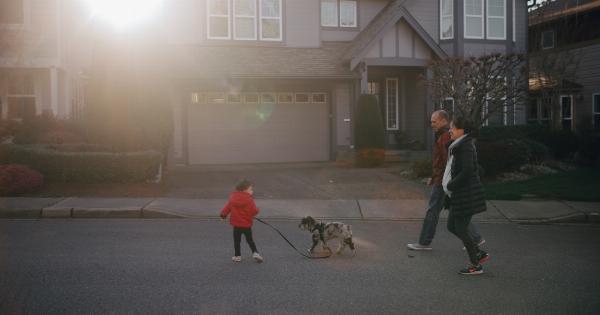Falls are a common occurrence, especially among older adults.
According to the National Council on Aging, one out of four Americans aged 65 and above falls every year, with falling being the leading cause of fatal and non-fatal injuries in this age group. While physical factors such as muscle weakness and balance problems are often attributed to falls, there is a growing body of research that suggests a strong mind-body connection when it comes to falls.
Mindfulness and Fall Prevention
One of the emerging areas of research in fall prevention is the role of mindfulness in reducing the risk of falls. Mindfulness, a practice rooted in Buddhist philosophy, involves intentionally paying attention to the present moment without judgment.
The practice has gained popularity in recent years for its potential benefits in various areas of health and well-being.
A study published in the Journal of Aging and Physical Activity examined the effects of an 8-week mindfulness-based intervention on balance and fall risk among older adults.
The results showed that participants who underwent the intervention experienced significant improvements in balance and a reduced risk of falls compared to the control group. The researchers attributed these improvements to the increased body awareness and enhanced attention to movement that mindfulness promotes.
The Role of Fear of Falling
A major psychological factor that can contribute to falls is the fear of falling itself.
After experiencing a fall, older adults often develop a fear of falling again, which can lead to a cycle of decreased physical activity, muscle weakness, and ultimately, an increased risk of falling. The fear of falling can also contribute to anxiety and social isolation, further exacerbating the problem.
A study published in the Journal of Aging and Health found that the fear of falling was associated with an increased risk of falls among community-dwelling older adults.
The researchers suggested that addressing and managing the fear of falling through cognitive-behavioral therapy and other interventions could be an effective strategy for fall prevention.
The Impact of Cognitive Function
Cognitive function, including attention, memory, and executive function, plays a crucial role in maintaining balance and preventing falls.
Research has shown that older adults with cognitive impairments are at a higher risk of falling compared to those with intact cognitive function.
A study published in the Journal of the American Geriatrics Society investigated the association between cognitive function and fall risk among older adults.
The results revealed that impairments in attention, memory, and executive function were significantly associated with an increased risk of falls. The researchers suggested that interventions targeting cognitive function could potentially reduce fall risk in this population.
Physical Activity and Falls
Regular physical activity has long been recognized as a key component of fall prevention, but its benefits extend beyond the physical realm.
Engaging in exercise and physical activity has been shown to improve cognitive function, enhance mood, and reduce the risk of depression and anxiety – all of which can indirectly contribute to fall prevention.
A meta-analysis published in the British Journal of Sports Medicine examined the effects of exercise interventions on fall risk among older adults.
The analysis showed that exercise programs, including strength training, balance exercises, and aerobic activities, significantly reduced the risk of falls. The researchers highlighted the importance of incorporating regular physical activity into fall prevention strategies, emphasizing its positive impact on both physical and mental well-being.
Stress and Falls
Stress is known to have detrimental effects on both physical and mental health, and it can also impact falls. Chronic stress can lead to increased muscle tension, reduced flexibility, and impaired balance, all of which can increase the risk of falling.
A study published in the Journal of Aging and Physical Activity explored the relationship between perceived stress and fall risk among older adults.
The results indicated that higher levels of perceived stress were associated with an increased risk of falls. The researchers suggested that stress management techniques, such as relaxation exercises and stress reduction programs, could be beneficial in fall prevention efforts.
The Importance of Sleep
Good-quality sleep is essential for overall health and well-being, including fall prevention. Sleep disturbances, such as insomnia and sleep apnea, have been linked to an increased risk of falls among older adults.
A study published in the journal Sleep examined the relationship between sleep duration and falls among older women. The findings indicated that both short and long sleep durations were associated with an increased risk of falls.
The researchers recommended optimizing sleep quality and duration as part of fall prevention strategies.
Social Engagement and Falls
Loneliness and social isolation are prevalent among older adults and can have negative effects on physical and mental health. Research suggests that social engagement and a strong social support network can play a protective role in fall prevention.
A study published in the Journal of the American Geriatrics Society found that social support was associated with a reduced risk of falls among older adults.
The researchers emphasized the importance of fostering social connections and maintaining an active social life as part of comprehensive fall prevention programs.
Conclusion
While physical factors have traditionally been the focus of fall prevention efforts, the mind-body connection is gaining recognition as an important aspect of reducing fall risk.
Understanding the interplay between mental and physical health can inform the development of holistic fall prevention strategies targeting mindfulness, fear of falling, cognitive function, physical activity, stress, sleep quality, and social engagement. By addressing these interconnected factors, we can enhance the well-being of older adults and reduce the burden of falls in our society.































